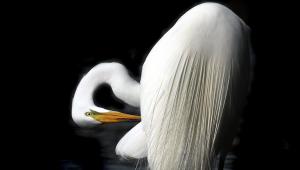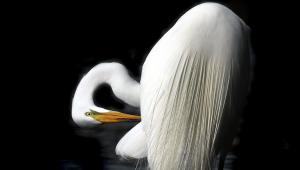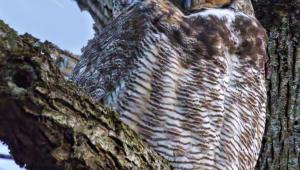Ask A Pro: Scott Kelby Answers Your Photography Questions

Hi everybody! Welcome to my new Q&A column here in Shutterbug—a magazine I’ve been reading, and been a fan of, for so many years—so it’s truly an honor to be here with you. I invite you to send in your questions to editorial@shutterbug.com (with “For Scott Kelby” as the subject line), and I’ll do my best to answer them in Ask a Pro. Now on to this month’s questions.
Q. My flash says I can use up to four different channels. Is there ever a reason I would need to change my channel? (My flash says it’s on Channel #1.)
A. The only time you’d really need to change channels on your flash is if you’re shooting in a situation where another photographer is in the same basic location and also shooting flash. The last thing you want is them taking a photo on the other side of the room and have your flash fire each time they do (or vice versa if you’re accidentally triggering their flash). The reason you’re firing each other’s flash is you’re both on the same channel (Channel #1, the default channel). If you switch your flash (and wireless transmitter) to Channel #2, you’ll both be on different channels (they’re still on Channel #1, you’re now on Channel #2), so you’re no longer firing each other’s flash. It’s worth noting that some flash triggers, such as PocketWizards, can have up to 32 different channels or more, depending on the model. But for practical purposes, you probably won’t need to use more than just those four basic channel choices on your flash (and even then, needing to change your channel will probably happen very rarely if ever).
Q. I made a long exposure cityscape photo using an ND filter to keep my shutter open longer (to make the waves in the shot look silky), but it looks like light is leaking in from my lens. How do I seal it so no outside light seeps in?
A. Most likely the problem isn’t lens leakage. The much more likely culprit (when it comes to long exposures) is actually your viewfinder. With your shutter being open so long (probably minutes), the small amount of light that sneaks in from your viewfinder is just enough to trash your shot. Some higher-end camera models actually have a little metal door you can slide over your viewfinder for situations like this (download a PDF of your camera manual to see if your model comes with this viewfinder door). You can also buy third-party covers (sometimes called “eyepiece shields”) that are designed to temporarily cover your viewfinder. You can also just cover the viewfinder with anything black (a cleaning cloth, a small piece of cardboard, etc.). I’d recommend, however, that you don’t hold the card (or cloth) with your hand because you might accidentally move the card, which might bump the camera a tiny bit and cause a big sharpness problem. And since a lack of sharpness can affect image quality worse than the light leakage you started with, I’d recommend you just tape some gaffer’s tape over your viewfinder.
Q. I made a portrait of a bride outside in the shade of a tree so the lighting would be soft, but the bride’s dress and veil look very blue. I tried changing the overall white balance to something warmer in Lightroom, but now her skin looks way too yellow/red. Is there something I should have done in camera?
A. Well, yes. You could have changed the white balance to shade (that would have helped a lot, versus the blue tint her wedding gown is getting from using auto white balance), but all is not lost because (and here’s something few folks know), you can actually “paint white balance” in Lightroom. Here’s how: get the Adjustment Brush; double-click directly on the word “Effect” to reset all the sliders to zero. Now drag the Temperature slider to the right a bit (toward yellow) and start painting over the bride’s gown and veil. Painting a yellow white balance over those blue areas kinda neutralizes the blue and makes the gown white again. After you’ve painted this warm white balance over the entire dress and veil, now tweak the amount of yellow so it actually looks nice and white, and you don’t see any yellow or any blue. That’ll do the trick. (By the way, I use this “paint the white balance trick” a lot when I’m shooting outdoor sports late in the day and part of the playing field is in daylight and part is in shadow. The players’ jerseys in the shadows all turn blue, but you can just paint it back to white using this same tip.)
Q. I’m going on vacation and am worried about possibly losing some of my images, or running out of memory cards to store everything, or both. How should I be managing my images while traveling?
A. I can tell you what I do and hopefully this will help because I’m as paranoid as anyone I know about losing images (especially when traveling). First, I never erase a memory card until I know I have my images backed up in two places. My laptop gets full fast, so I carry a Western Digital 1TB WD Elements Portable USB 3.0 Hard Drive with me (it’s about $70 and very lightweight; the older model I have is only 5.4 ounces—the newer one is 8.6 ounces). So, each night on vacation I copy my memory cards onto that drive. Those memory cards are my second backup, so I don’t erase them until I get back home and make another backup somewhere else (my archive hard drive at the office). Then, just for extra safety, each night I quickly go through my shoot in Lightroom to find and flag the best shots. I don’t edit them or finish them off, I just mark the decent shots. Then I upload these to Dropbox overnight while I’m sleeping. That way, if my laptop bag or hard drive gets lost, stolen, or dies, I have my best shots already backed up in “the cloud.”
Scott Kelby is a photographer, Photoshop Guy, award-winning author of more than 50 books, and CEO of KelbyOne, an online education community dedicated to helping photographers take the kinds of images they’ve always dreamed of. You can learn more about Scott at his daily blog (scottkelby.com), or follow him on Twitter: @scottkelby.
(Editor’s Note: Ask a Pro is a new Q&A column from professional photographer, writer, and educator Scott Kelby. Scott is here to answer all your photography-related questions, so if you have something you’d like to know, e-mail him at editorial@shutterbug.com (with “For Scott Kelby” as the subject line) and your query could be featured in the next edition of Ask a Pro.)
- Log in or register to post comments

















































